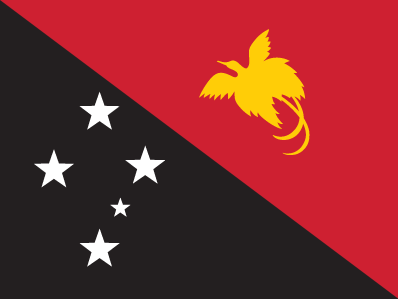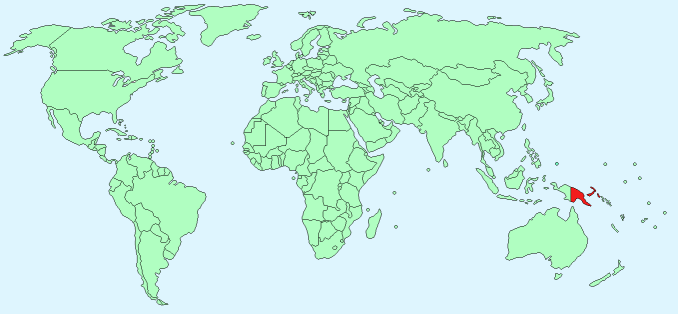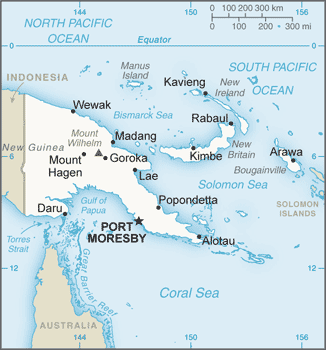Papua New Guinea


Continent – Australasia, Oceania
Region – Oceania
Size – 462,840 km²
Geography – mountainous with coastal lowlands
Language – Tok Pisin, English, indigenous languages
Religion – Roman Catholic 27%, Protestant 69.4%, other or unspecified 3.6%
Monetary Unit – Papua New Guinean kina
Natural Resources – gold, copper, silver, natural gas, timber, oil, fisheries
Agriculture – coffee, cocoa, copra, palm kernels, tea, sugar, rubber, sweet potatoes, fruit, vegetables, vanilla; poultry, pork; shellfish
Industry – copra crushing, palm oil processing, plywood production, wood chip production; mining (gold, silver, copper); crude oil and petroleum products; construction, tourism

Neighbouring Countries – Indonesia
Population – 6,672,429 (2015 estimate)
Population Growth Rate – 1.78%
Average Life Expectancy – 67.03 years
Capital City – Port Moresby (345,000)
Highest Mountain – Mount Wilhelm (4,509m)
Longest River – Sepik River (1,126km)
Climate – tropical, humid climate 23°C to 28°C
Yearly Rainfall – 300cm (approx)
Plant Life – mangroves, casuarina, sago, palm, kwila, cedar, ferns, orchids, lilies,
Animal Life – bats, tree kangaroo, forest wallaby, echidna, bandicoot
Bird Life – bird of paradise, bower bird, cassowary, kingfisher parrots, pigeon, hornbill, cockatoo
Marine Life – dolphins, whales
Harvard Reference for this page:
Heather Y Wheeler. (2015). Papua New Guinea. Available: https://www.naturalhistoryonthenet.com/Facts_Figures/Country_Facts/papua_new_guinea.htm. Last accessed Tuesday, July 19, 2016
Facts and Figures Pages
